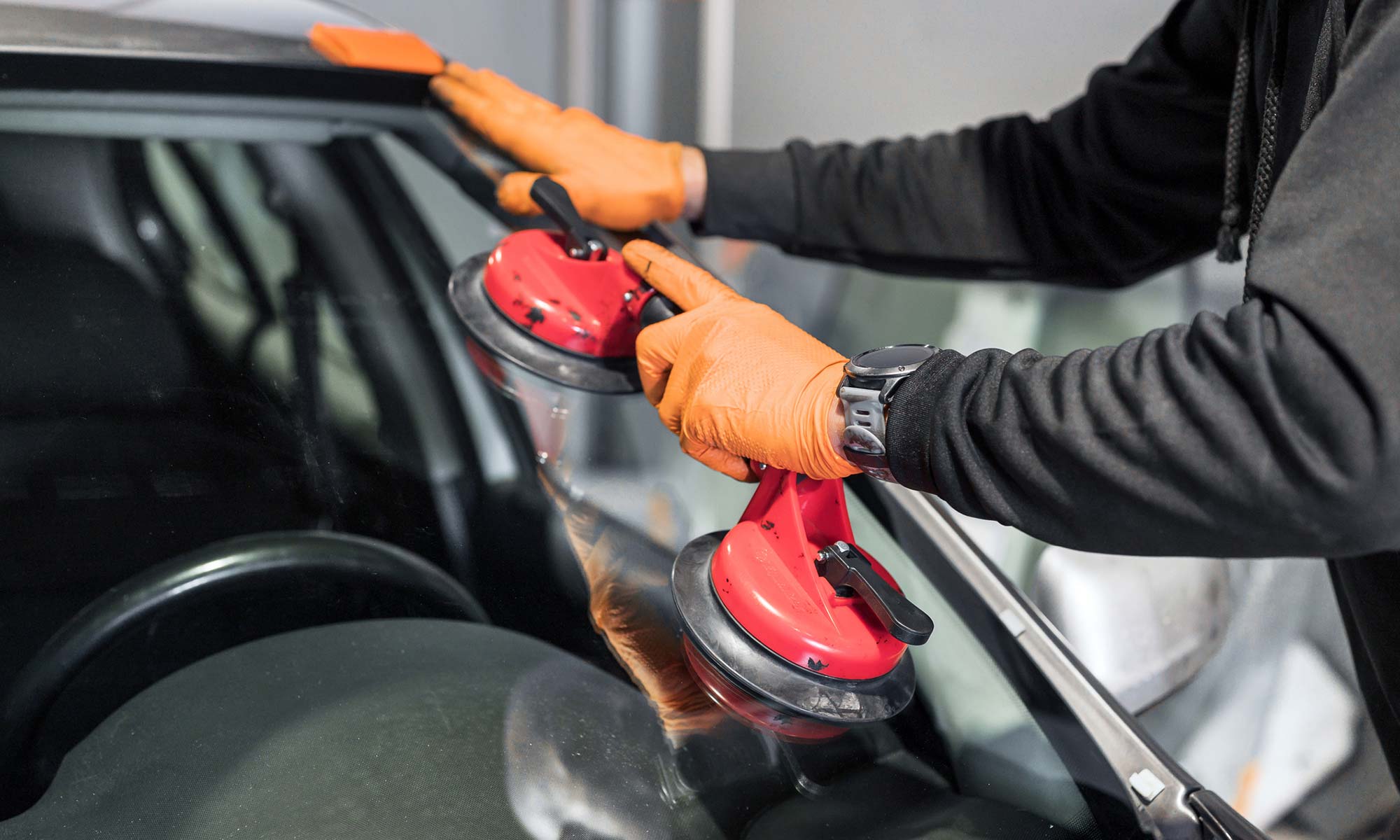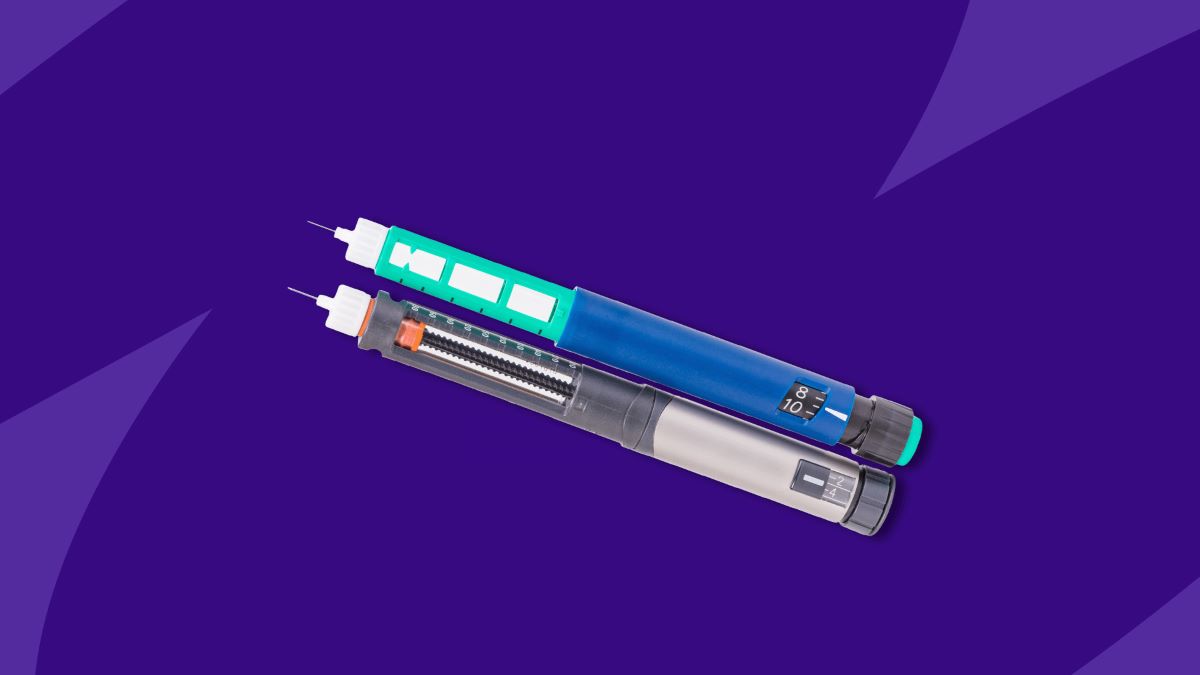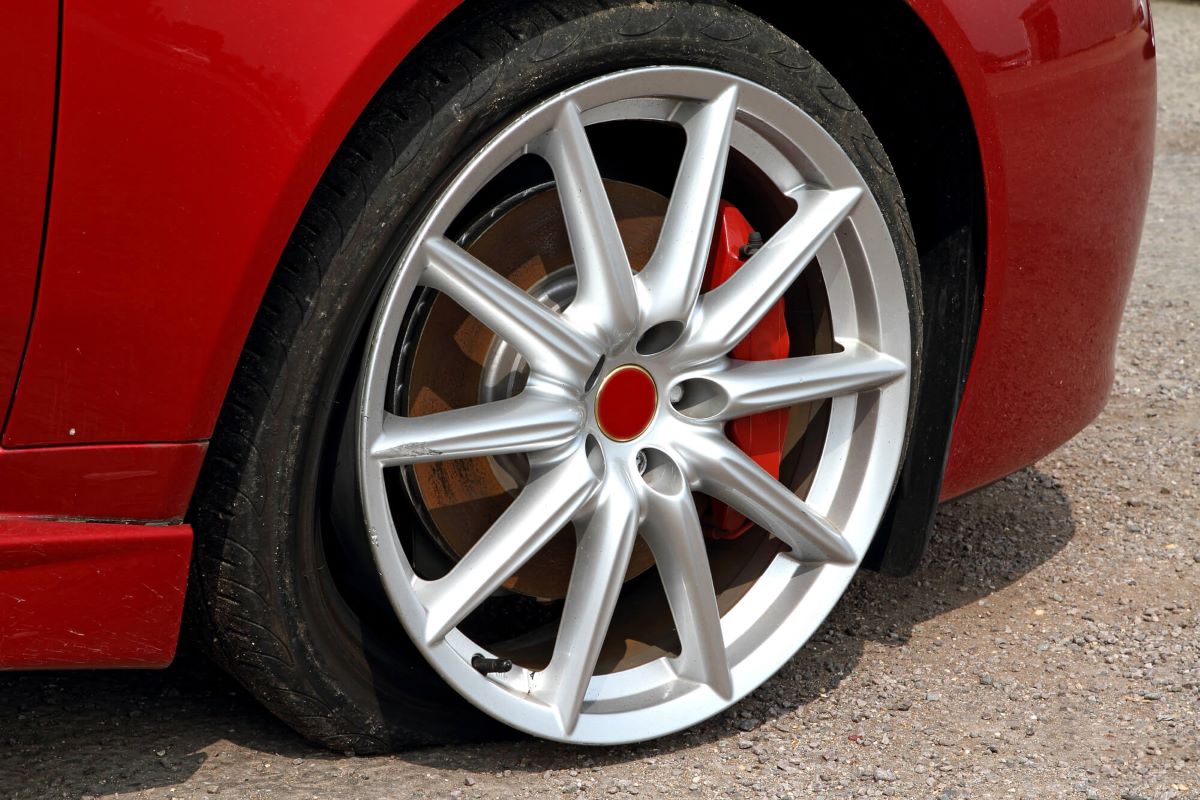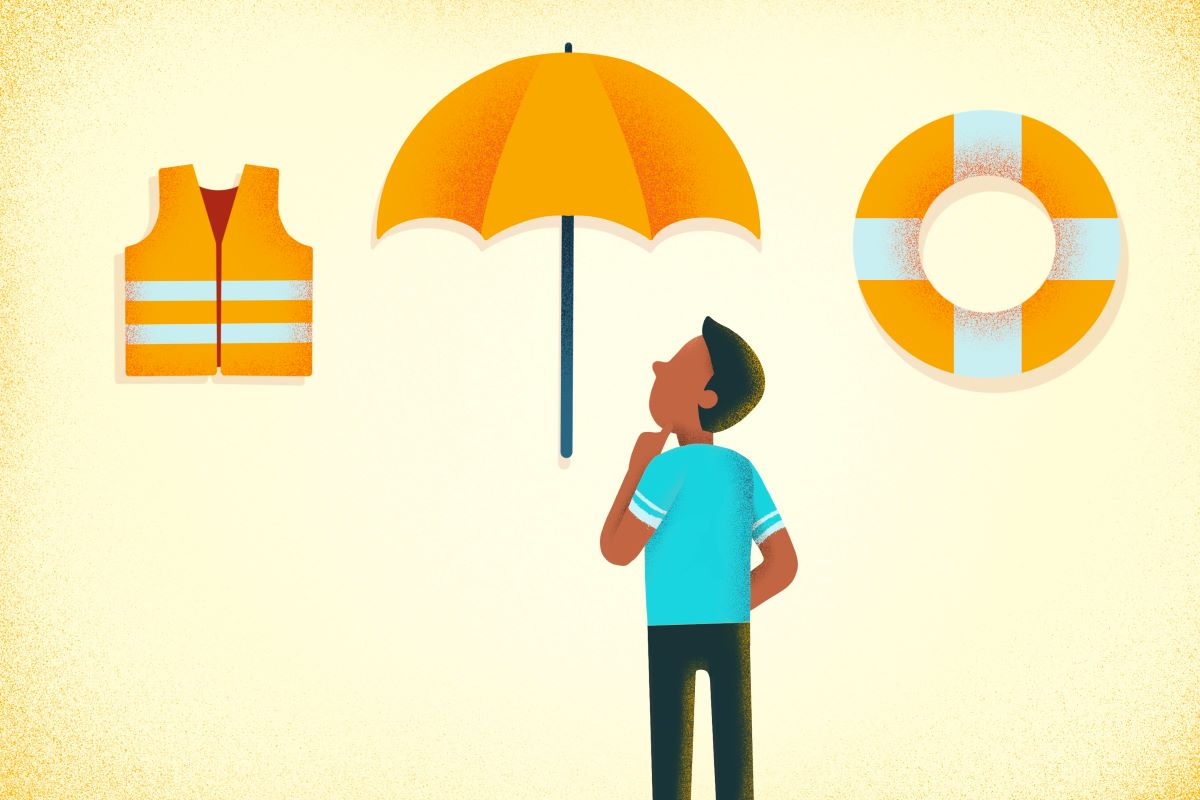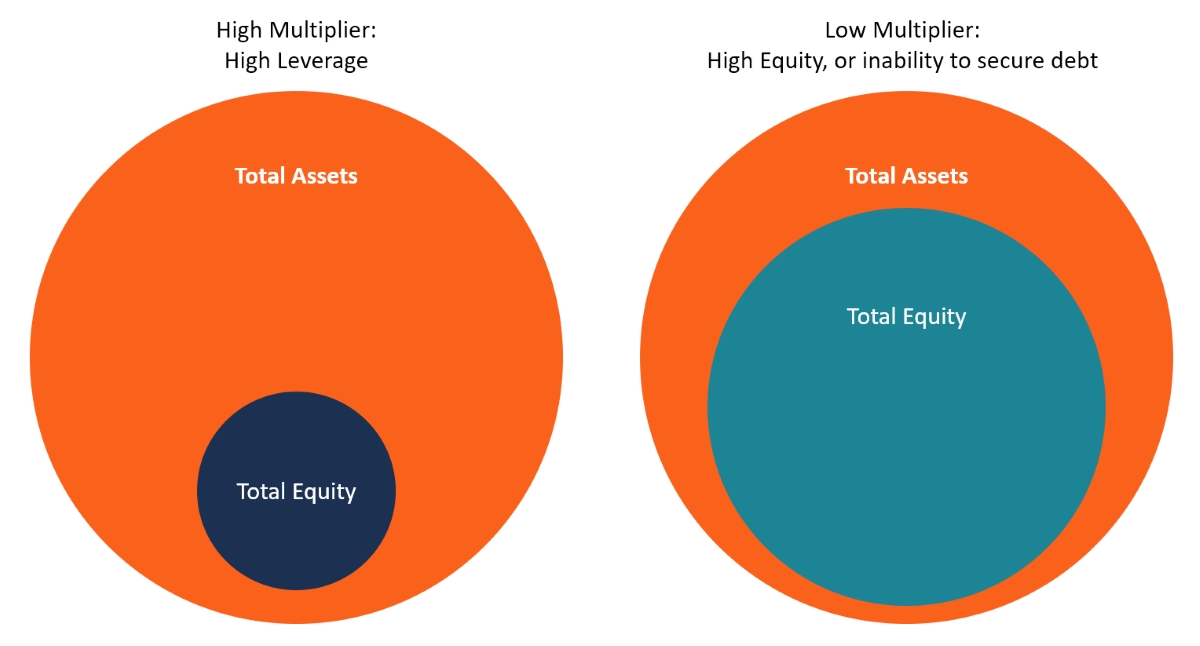Home>Finance>How Many Windshields Are Covered By Insurance In Florida?
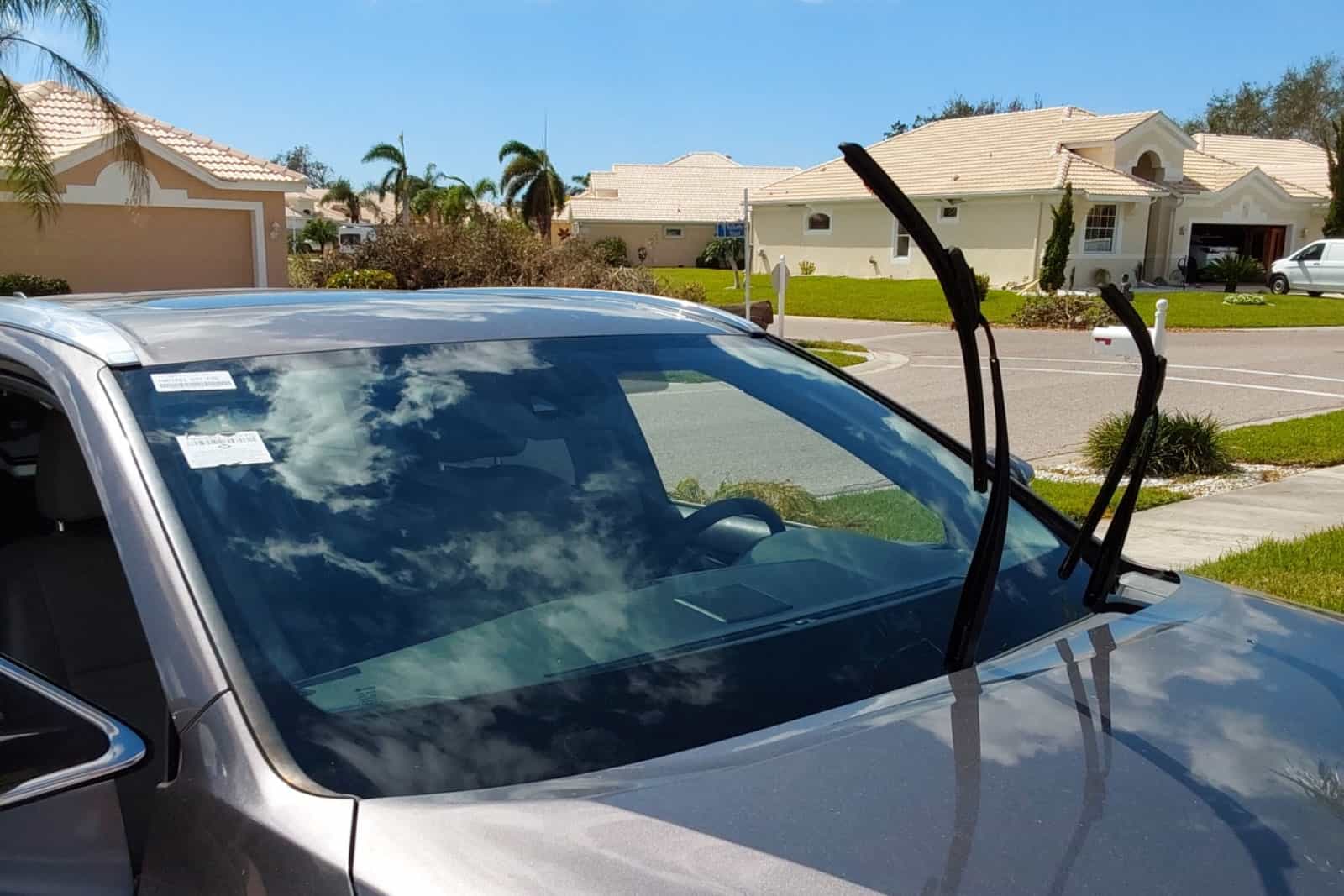

Finance
How Many Windshields Are Covered By Insurance In Florida?
Published: November 6, 2023
Discover how many windshields are covered by insurance in Florida and learn about the important details in finance.
(Many of the links in this article redirect to a specific reviewed product. Your purchase of these products through affiliate links helps to generate commission for LiveWell, at no extra cost. Learn more)
Table of Contents
- Introduction
- The Importance of Windshield Insurance Coverage
- Overview of Insurance Coverage in Florida
- Understanding Florida’s Windshield Insurance Policies
- Factors Affecting Windshield Insurance Coverage
- Common Claims for Windshield Damage in Florida
- Types of Windshield Damage Covered by Insurance
- Deductibles and Coverage Limits in Florida
- Average Cost of Windshield Replacement with Insurance
- How to File a Windshield Insurance Claim in Florida
- Tips for Maximizing Your Windshield Insurance Coverage
- Conclusion
Introduction
In Florida, having insurance coverage for your vehicle is not only a legal requirement but also a wise financial decision. While most people are aware of the need for insurance to protect against accidents and theft, many overlook the importance of windshield insurance coverage. Windshield damage is a common occurrence, whether due to a rock chip, crack from extreme temperatures, or even vandalism. Without insurance coverage, the cost of repairing or replacing a windshield can be a burden on your finances.
Florida is known for its beautiful beaches and sunny weather, but it also experiences its fair share of storms and high-speed road debris. As a result, windshield damage is a prevalent issue for drivers across the state. A small chip or crack may seem insignificant, but it can quickly escalate into a safety hazard or even lead to a failed vehicle inspection.
Understanding the intricacies of windshield insurance coverage in Florida is essential for all vehicle owners. This article will provide an in-depth overview of how windshield insurance works in the state, the types of coverage available, factors that affect coverage, and tips for maximizing your insurance benefits.
Whether you reside in bustling Miami, vibrant Orlando, or charming Tampa, the information shared here will help you navigate through the complexities of windshield insurance coverage and ensure you have the necessary protection when you need it most.
So, let’s delve into the details of windshield insurance coverage in Florida and discover how it can safeguard your finances and peace of mind.
The Importance of Windshield Insurance Coverage
Windshield insurance coverage is often overlooked by vehicle owners, but it plays a crucial role in protecting your finances and ensuring your safety on the road. While some may question the need for this specific coverage, there are several compelling reasons why it is important to have windshield insurance.
First and foremost, windshield damage can happen to anyone, regardless of their driving skills or precautions taken. Whether it’s a small pebble kicked up by a passing vehicle or a falling branch during a storm, your windshield is vulnerable to damage. Without insurance coverage, you could be left paying out-of-pocket for the repairs or replacement, which can be a significant financial burden.
Furthermore, a damaged windshield can impair visibility and compromise the structural integrity of your vehicle. A crack or chip on your windshield can obstruct your view of the road, making it difficult to navigate safely. Additionally, the windshield plays a vital role in supporting the roof of your car, and any damage to it can weaken the overall structure of the vehicle. By having windshield insurance coverage, you can quickly address any damage and ensure the safety of yourself and your passengers.
Additionally, windshield repair or replacement costs can vary widely depending on the extent of the damage and the type of vehicle you own. Without insurance coverage, you may be faced with a hefty bill that you may not be financially prepared to handle. Windshield insurance helps alleviate this cost burden by covering the expenses associated with repairs or replacement, giving you peace of mind and protecting your budget.
Furthermore, in the state of Florida, driving with a damaged windshield is not only unsafe but can also result in legal consequences. Law enforcement officers can issue citations if they deem your windshield to be obstructed or pose a safety hazard. By having windshield insurance coverage, you can promptly address any damage and avoid potential legal complications.
Therefore, it is evident that windshield insurance coverage is not a luxury but a necessary protection for vehicle owners. It provides financial security, ensures road safety, and helps you avoid legal troubles.
Now that we understand the importance of windshield insurance coverage, let’s explore the details of insurance policies in Florida and how they work specifically for windshields.
Overview of Insurance Coverage in Florida
Before delving into the specifics of windshield insurance coverage in Florida, it’s important to have a basic understanding of the overall insurance landscape in the state. In Florida, drivers are required to carry a minimum level of insurance coverage to legally operate a vehicle.
The state follows a no-fault auto insurance system, which means that drivers are required to carry Personal Injury Protection (PIP) coverage. PIP insurance covers medical expenses and lost wages for you and your passengers, regardless of who is at fault in the accident. The minimum PIP coverage required in Florida is $10,000. Additionally, drivers are also required to have Property Damage Liability coverage, with a minimum limit of $10,000.
While these basic coverage requirements are essential, they do not typically include specific coverage for windshield damage. Windshield insurance coverage is often offered as an additional option called Comprehensive Coverage. Comprehensive Coverage protects against various types of damage, including windshield damage caused by incidents other than accidents, such as rock chips, cracks, and vandalism.
It’s worth noting that Comprehensive Coverage is not mandated by law in Florida, but it is highly recommended, especially considering the prevalence of windshield damage in the state. Without Comprehensive Coverage, you may be responsible for the full cost of repairing or replacing your windshield.
However, even if you have Comprehensive Coverage, it’s essential to understand the details and limitations of your policy. Deductibles, coverage limits, and specific situations in which windshield damage is covered may vary between insurance providers and individual policies. It’s crucial to review your policy documents carefully or consult with your insurance agent to fully understand your coverage.
Now that we have a basic understanding of insurance coverage in Florida, let’s dive into the specifics of windshield insurance policies in the state and how they work.
Understanding Florida’s Windshield Insurance Policies
When it comes to windshield insurance coverage in Florida, there are a few key aspects to understand. These policies typically fall under the umbrella of Comprehensive Coverage, which provides protection against various types of damage beyond accidents.
Firstly, it’s essential to determine whether your insurance policy includes coverage for windshield damage. While Comprehensive Coverage usually includes windshield protection, it’s wise to review your policy or consult with your insurance provider to confirm this coverage.
Next, it’s important to be aware of any deductibles associated with your windshield insurance coverage. A deductible is the amount you must pay out-of-pocket before your insurance coverage kicks in. For example, if your policy has a $500 deductible and the cost of windshield repair is $800, you would be responsible for paying the initial $500, and your insurance would cover the remaining $300.
Additionally, understanding the coverage limits is crucial. Coverage limits refer to the maximum amount your insurance will pay for windshield repairs or replacement. These limits can vary between policies and may be subject to certain conditions, so it’s essential to review your policy details carefully.
Moreover, it’s important to know the specific situations in which your windshield is covered by insurance. Most policies cover damage caused by factors such as flying debris, falling objects, vandalism, and even natural disasters. However, it’s important to check the specific terms of your insurance policy, as certain types of damage may have specific requirements or limitations.
Another factor to consider is whether your policy covers full windshield replacement or only repairs. Minor cracks and chips can often be repaired, which is generally more cost-effective and less time-consuming. However, in some cases, the damage may be too extensive, necessitating a full windshield replacement. Knowing your policy’s coverage in this regard can help you plan accordingly.
It’s worth noting that some insurance policies offer additional features and benefits for windshield coverage. This may include waiving the deductible for repairs, coverage for mobile windshield repairs, or even coverage for aftermarket windshields. Understanding these additional benefits can further enhance your windshield insurance coverage.
By understanding the details and nuances of your windshield insurance policy, you can make informed decisions and take advantage of the coverage when you need it. Next, let’s explore the various factors that can affect your windshield insurance coverage in Florida.
Factors Affecting Windshield Insurance Coverage
When it comes to windshield insurance coverage in Florida, several factors can influence the availability and terms of coverage. Understanding these factors is essential for vehicle owners in the state.
One key factor that can affect windshield insurance coverage is the insurance provider itself. Different insurance companies may offer varying levels of coverage for windshield damage. It’s important to research and compare different insurance providers to find the one that offers comprehensive coverage for your windshield at a price that fits your budget.
Additionally, the type of vehicle you own can impact your windshield insurance coverage. Luxury or high-end vehicles may have higher repair or replacement costs, which could affect the coverage limits or deductibles associated with your policy. It’s important to consider these factors when selecting your insurance coverage.
The location where you reside within Florida can also play a role in windshield insurance coverage. Certain areas may have higher incidents of windshield damage due to factors like heavy traffic, construction zones, or higher incidence of vandalism. Insurance providers may take these factors into account when determining coverage options and rates.
Another factor to consider is your driving record. If you have a history of multiple windshield claims or accidents, insurance providers may view you as a higher risk, which can impact your coverage options or premiums. Maintaining a clean driving record and avoiding frequent claims can help you secure favorable windshield insurance coverage.
Your deductible is another crucial factor that affects windshield insurance coverage. A higher deductible means you will be responsible for a larger portion of the repair or replacement cost before your insurance coverage kicks in. It’s important to choose a deductible that aligns with your financial situation and risk tolerance.
Furthermore, the age and condition of your vehicle can impact windshield insurance coverage. Older vehicles may have higher repair or replacement costs, which could affect your coverage limits or premiums. It’s important to consider the value and condition of your vehicle when selecting appropriate coverage.
Lastly, it’s worth noting that some insurance providers may offer optional windshield coverage endorsements or add-ons. These additional options can further enhance your windshield insurance coverage and provide additional benefits, such as coverage for cosmetic damages or premium repair materials.
By considering these factors, you can make informed decisions about your windshield insurance coverage and select the best policy that fits your needs and budget. Now let’s explore the common claims for windshield damage in Florida.
Common Claims for Windshield Damage in Florida
Florida’s unique climate and road conditions make windshield damage a common occurrence for drivers across the state. Understanding the most prevalent types of claims for windshield damage can help you anticipate potential risks and ensure you have the appropriate insurance coverage.
One of the most common claims in Florida is windshield damage caused by road debris. With numerous construction zones, heavy traffic, and frequent storms, there is often loose gravel, rocks, or other objects on the road that can be kicked up by passing vehicles and strike your windshield. These incidents can result in chips, cracks, or even shattered windshields.
Extreme temperature changes also contribute to windshield damage in Florida. Prolonged exposure to intense heat can cause small cracks or chips in the windshield to expand, leading to further damage. Similarly, sudden temperature changes, such as going from a hot day to encountering a cool breeze or rain, can put stress on the windshield and worsen existing damage.
Hurricanes and severe storms are another significant cause of windshield damage in Florida. Strong winds can whip debris through the air, causing it to collide with vehicles and result in windshield damage. Falling tree branches, flying debris from structures, and even hail can all cause significant harm to windshields during severe weather events.
Vandalism is also a common reason for windshield damage claims. Unfortunately, incidents of intentional damage to vehicles, including windshields, occur in urban areas as well as in rural locations. Such acts may involve smashing the windshield, scratching the surface, or causing damage with sharp objects.
It’s important to note that not all types of windshield damage may be covered by insurance. For instance, some policies may have exclusions for cosmetic damage or damage caused by neglect or misuse.
By being aware of these common claims for windshield damage, you can take precautions to protect your vehicle and make sure you have the necessary insurance coverage in place. It’s always advisable to stay vigilant on the road, maintain a safe driving distance, and park your vehicle in secure areas to reduce the risk of windshield damage.
Now that we have explored the common claims for windshield damage, let’s discuss the types of windshield damage typically covered by insurance.
Types of Windshield Damage Covered by Insurance
Insurance coverage for windshield damage in Florida typically includes a range of common types of damage. Understanding these types of damage can help you determine if your insurance policy provides sufficient coverage.
One of the most common types of windshield damage covered by insurance is rock chips. Rock chips occur when small rocks or debris hit the windshield at high speeds, causing small marks or dents. While these may seem minor at first, they can quickly develop into larger cracks if left untreated. Most insurance policies cover rock chip repairs to prevent further damage.
Cracks are another type of windshield damage commonly covered by insurance. Cracks can occur due to various reasons, such as impacts from road debris or temperature changes. Insurance policies typically cover different types of cracks, including short cracks, long cracks, and spiderweb cracks. The specific guidelines and limitations may vary between insurance providers and policies, so it’s important to review your policy details.
Additionally, insurance coverage often includes damage caused by vandalism. Acts of vandalism, such as intentionally smashing the windshield or causing scratches and dents, can be frustrating and expensive to repair. Having coverage for vandalism ensures that you can have your windshield repaired or replaced without bearing the full cost yourself.
Moreover, comprehensive coverage typically includes coverage for damage resulting from severe weather conditions. If your windshield is damaged by a storm, hurricane, or hail, insurance policies typically cover the repairs or replacement. However, it’s essential to review your policy documents to understand any specific conditions or limitations related to weather-related damage claims.
It’s important to note that while insurance coverage for windshield damage is comprehensive, there may be certain exclusions or limitations. For example, damage caused by improper installation or pre-existing damage may not be covered. Additionally, cosmetic damages that do not affect the functionality of the windshield may not be covered under some policies.
By understanding the types of windshield damage covered by insurance, you can be prepared to file a claim when needed and ensure that the necessary repairs or replacements are covered by your policy. Now let’s discuss the deductibles and coverage limits that apply to windshield insurance coverage in Florida.
Deductibles and Coverage Limits in Florida
When it comes to windshield insurance coverage in Florida, understanding the deductibles and coverage limits associated with your policy is crucial. These factors determine the financial responsibility you have in the event of windshield damage and the maximum amount your insurance will pay for repairs or replacement.
A deductible is the amount you must pay out-of-pocket before your insurance coverage kicks in. For example, if your policy has a $500 deductible and the cost of windshield repairs is $800, you would be responsible for paying the initial $500, and your insurance would cover the remaining $300. Deductibles are specified in your insurance policy and can vary between policies and insurance providers.
The deductible amount can have a significant impact on your out-of-pocket expenses. Generally, policies with higher deductibles have lower premium payments, while policies with lower deductibles have higher premium payments. It’s essential to choose a deductible that aligns with your financial situation and risk tolerance.
Additionally, coverage limits determine the maximum amount your insurance will pay for windshield repairs or replacement. Insurance providers specify these limits in your policy, and they can vary between policies and insurance companies. It’s important to review your policy documents to understand the specific coverage limits that apply to your windshield insurance.
The coverage limits may vary based on factors such as the type of damage, the severity of the damage, and the value of your vehicle. It’s crucial to be aware of these limits to assess whether your coverage adequately protects you in case of windshield damage.
It’s worth noting that some insurance companies may offer additional options to enhance your windshield coverage. This may include options for waiving the deductible for repairs, coverage for mobile windshield repairs, or even coverage for aftermarket windshields. These additional coverages can provide additional benefits but may also have specific terms or limitations, so it’s important to review your policy carefully.
Understanding the deductible and coverage limits of your windshield insurance coverage is essential to ensure you are prepared to handle any windshield damage and make informed decisions when filing a claim. Now let’s explore the average cost of windshield replacement with insurance in Florida.
Average Cost of Windshield Replacement with Insurance
The cost of windshield replacement can vary depending on various factors, such as the type of vehicle, the extent of the damage, and the type of windshield being installed. Fortunately, having insurance coverage for windshield damage can help mitigate the cost burden associated with replacement.
In Florida, the average cost of windshield replacement with insurance can range from $200 to $600. The exact cost may vary depending on the make and model of your vehicle, as well as the type of windshield being installed. High-end vehicles or vehicles with advanced safety features may have more expensive windshields, resulting in a higher replacement cost.
It’s important to note that insurance coverage typically covers the cost of windshield replacement, minus the deductible. For example, if the total cost of windshield replacement is $400 and your insurance policy has a $100 deductible, you would be responsible for paying the deductible amount ($100), and the insurance would cover the remaining cost ($300). This is why choosing the right deductible amount is crucial, as it affects the out-of-pocket expenses you incur.
However, it’s worth mentioning that insurance coverage for windshield replacement may have coverage limits. These limits specify the maximum amount the insurance will pay for the replacement. If the cost of the replacement exceeds the coverage limit, you may be responsible for covering the difference. Reviewing your policy details and understanding the coverage limits is essential to avoid any unexpected expenses.
Furthermore, insurance providers may have preferred or approved repair shops or service providers. It’s recommended to work with these authorized providers to ensure that your insurance coverage is applicable and that the service performed meets the required standards. Working with authorized providers can also streamline the claims process and facilitate direct billing with your insurance company.
It’s important to keep in mind that the average cost of windshield replacement can vary from one situation to another, and individual insurance policies may have specific terms and conditions. Consulting with your insurance provider or reviewing your policy documents will provide you with a more accurate estimate of the cost and coverage for windshield replacement with your insurance.
Now that we understand the average cost of windshield replacement, let’s explore the process of filing a windshield insurance claim in Florida.
How to File a Windshield Insurance Claim in Florida
If you find yourself in need of filing a windshield insurance claim in Florida, it’s important to follow the proper steps to ensure a smooth and efficient process. Here is a step-by-step guide on how to file a windshield insurance claim:
1. Review your policy: Before filing a claim, carefully review your insurance policy to understand your coverage, deductibles, and any specific requirements or limitations related to windshield damage claims.
2. Document the damage: Take photos of the damage to your windshield as soon as possible. This visual evidence will help support your claim and provide documentation for the insurance company.
3. Contact your insurance provider: Notify your insurance provider about the windshield damage and initiate the claims process. Provide them with all the necessary information, such as the location and extent of the damage, date and time of the incident, and any relevant photos or documentation.
4. Schedule an inspection: Your insurance provider may require an inspection of the windshield damage. They may guide you through the process of scheduling an inspection with an authorized repair shop or arrange for an adjuster to assess the damage.
5. Obtain repair estimates: If required by your insurance company, obtain estimates for the cost of repairs or replacement from authorized repair shops. Ensure that you comply with any specific guidelines provided by your insurance provider, such as using their preferred or approved providers.
6. Pay the deductible: If your policy has a deductible, you will need to pay this amount out-of-pocket before your insurance coverage applies. Be prepared to make this payment either to the repair shop or to the insurance company directly.
7. Proceed with repairs or replacement: Once the claims process is completed and your insurance company has approved the claim, you can proceed with the repairs or replacement of your windshield. Coordinate with the authorized repair shop to schedule the appointment and have the work done promptly.
8. Submit required documentation: After the repairs or replacement are completed, submit any required documentation to your insurance provider, such as invoices, receipts, or proof of payment. This step ensures that your claim is properly processed and closed.
It’s important to note that each insurance provider may have their specific procedures and requirements for filing a windshield insurance claim. It’s recommended to reach out to your insurance company directly or consult your policy documents for detailed instructions on filing a claim.
By following these steps and working closely with your insurance provider and authorized repair shops, you can ensure a smooth and efficient process for filing a windshield insurance claim in Florida. Now let’s explore some tips for maximizing your windshield insurance coverage.
Tips for Maximizing Your Windshield Insurance Coverage
Maximizing your windshield insurance coverage in Florida involves taking proactive steps to prevent damage and making the most of your insurance benefits. Here are some tips to help you maximize your windshield insurance coverage:
1. Maintain a safe driving distance: Keeping a safe distance from the vehicle ahead of you can help minimize the chances of rocks or debris causing damage to your windshield. Avoid tailgating and be cautious when driving behind trucks or construction vehicles that may kick up debris.
2. Park in safe areas: Whenever possible, park your vehicle in covered or secure areas to reduce the risk of vandalism or exposure to severe weather conditions. Parking in a garage or covered parking lot can shield your windshield from potential damage.
3. Repair small chips or cracks promptly: If you notice a small chip or crack on your windshield, have it repaired as soon as possible. Many insurance policies offer coverage for chip repairs without requiring you to pay a deductible. Addressing minor damage promptly can help prevent it from worsening and requiring a full windshield replacement.
4. Choose a suitable deductible: Consider the deductible amount associated with your policy when selecting coverage. Opting for a higher deductible may lower your premiums, but it means you will have a higher out-of-pocket expense in the event of a claim. Choose a deductible that aligns with your budget and risk tolerance.
5. Understand your coverage limits: Review your policy to understand the coverage limits for windshield repairs or replacement. Knowing the maximum amount your insurance will cover can help you plan and budget accordingly. If necessary, consider additional coverage options to extend your limits if available.
6. Work with authorized repair shops: Insurance providers often have a network of authorized repair shops. Choose an authorized repair shop for windshield repairs or replacement to ensure that your insurance coverage is applicable and that you receive quality service. Authorized shops can streamline the claims process and facilitate direct billing with your insurance company.
7. Keep up with regular maintenance: Ensuring that your vehicle is in good overall condition can help prevent windshield damage. Regularly replace worn-out windshield wipers and inspect your windshield for any signs of damage or wear. Proper vehicle maintenance can reduce the risk of unexpected windshield issues.
8. Review your policy regularly: Periodically review your insurance policy to stay aware of any changes in coverage, deductibles, or limitations. Contact your insurance provider if you have any questions or if there are changes that need to be made to your coverage. Staying proactive and informed about your policy can help ensure you have the coverage you need.
By following these tips, you can make the most of your windshield insurance coverage and minimize the financial impact of windshield damage. Remember to consult with your insurance provider for specific guidance and to stay up to date with any policy changes or updates.
Now, let’s conclude our discussion on windshield insurance coverage in Florida.
Conclusion
Windshield insurance coverage plays a crucial role in protecting your finances and ensuring your safety on the roads of Florida. Understanding the importance of windshield insurance and the details of coverage is vital for all vehicle owners in the state.
By having windshield insurance coverage, you can protect yourself from the financial burden of repairing or replacing a damaged windshield. It safeguards your budget, ensures road safety, and protects you from potential legal consequences. Windshield damage is a common occurrence in Florida due to road debris, severe weather conditions, and vandalism, making insurance coverage even more critical.
When considering windshield insurance in Florida, it’s important to review your policy documents and understand the details, deductibles, and coverage limits. Each insurance provider may have unique policies and procedures, so it’s crucial to research and compare different insurance companies to find the best coverage for your needs.
Maximizing your windshield insurance coverage involves proactive steps such as maintaining a safe driving distance, promptly addressing minor windshield damage, and choosing the right deductible. It’s also essential to work with authorized repair shops and regularly review your policy to stay informed about any changes or updates.
Ultimately, by understanding the intricacies of windshield insurance coverage, you can ensure that you are adequately protected and financially prepared in the event of windshield damage. Take the necessary precautions, stay vigilant on the road, and make the most of your windshield insurance coverage to navigate Florida’s roads with confidence and peace of mind.
